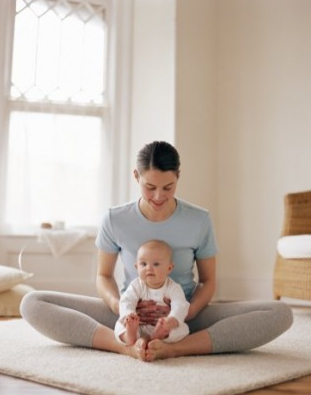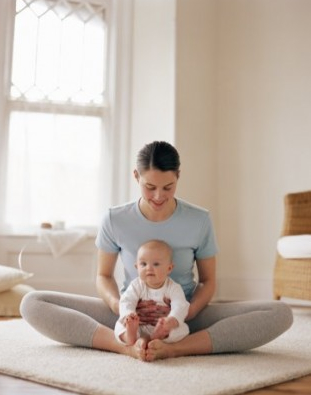How Soon Can You Exercise Post Birth?


Thanks to glossy magazines and Hollywood stars (yes, YOU Jessica Alba and Miranda Kerr), we are all now brainwashed with unrealistic and unhealthy expectations of how our bodies should appear post birth.
The stories with glorified before and after pictures in magazines are forced upon us weekly, coupled with stories of an ‘easy birth’ followed by celebrities bouncing back to their pre-baby body within 48 hours. Um… no. Sorry, HELL NO.
First of all, does anyone have an ‘easy’ birth? And secondly, why oh why would anyone swap the early precious moments with their newborn for a 0 calorie diet and buckets of sweat?
‘No sane person’ is the answer, and certainly no one who is working within the safe guidelines of exercising post birth. So let’s discuss what is realistic, and more importantly safe.
The current medical guidelines regarding when it is safe to begin postpartum exercise have relaxed since the stricter 6-8 week “no exercise” mandate. As every woman is unique, so is the birth of her baby and recovery rate. It is always smart to talk to your doctor before starting any fitness program postpartum to make sure your body is ready to exercise (and any incisions healed).
Ask yourself the following: did you exercise throughout your pregnancy and had a normal vaginal delivery? If yes, then you can safely continue your pregnancy workout routine within a week of giving birth – just make sure it is light exercises such as walking and that you modify movements such push ups. As the weeks progress you can build on the duration to x3 moderate 30 minute walks a week.
If you had a c-section, expect to wait about six to eight weeks to exercise. However, walking at an easy pace is encouraged because it promotes healing and helps prevent complications such as blood clots.
Other important things to remember that due to your hormones (relaxin) your joints and ligament will still be extra stretchy so no crazy yoga moves please as you will be prone to injury!! Also, if you weren’t active during your pregnancy, or tapered off your fitness routine as the weeks went on, start slow and check with your doctor or midwife before you begin exercising.
Catherine Cram, M.S. advises that the following are exercises that can be done within 24 hours of delivery. These exercises help your muscles start functioning after a cesarean section or vaginal birth and are a great starting point within those first 6 weeks.
Try to do 10-20 repetitions of each exercise 2-3 times a day.
Diaphragmatic breathing (Abdominal tightening on outward breath): Lying on your back, place your hands over your abdomen. Inhale and allow your belly to rise as it fills with air. Exhale through your mouth as you tighten your abs, pulling them in towards your spine. Your stomach should flatten, not bulge, as you exhale.
Hut Exercise: Either sit in bed or a chair, or lie on your side in bed and place your hands over your tummy. Take a big breath in, and as you exhale say the word “hut” forcefully. You should feel your tummy tighten as you say “hut” and relax as you inhale. Ankle/foot movements help prevent blood clots after anesthesia.
Kegels (Pelvic floor contractions): Can be done in any position.
Opposite Hands And Knees On all fours start with pushing your left arm in front of you until it is at eye level/in line with your head. Then bring it back to the ground. Do the same with your right leg, push it out behind you as if you are pushing the wall away with your foot. Once you have your balance down you want to do them both at the same time – right arm and left leg push out. Exhale as you push and keep you belly button to your spine. Do 10 on each side and repeat through out the day!
Is exercise still the LAST thing on your mind 7 weeks post birth (or 7 years post birth…)? Regular exercise after pregnancy can:
- Promote weight loss
- Improve your cardiovascular fitness
- Restore muscle strength
- Condition your abdominal muscles
- Boost your energy level
- Improve your mood
- Relieve stress
- Help prevent and promote recovery from postpartum depression
Better yet, including physical activity in your daily routine helps you set a positive example for your child now and in the years to come.










